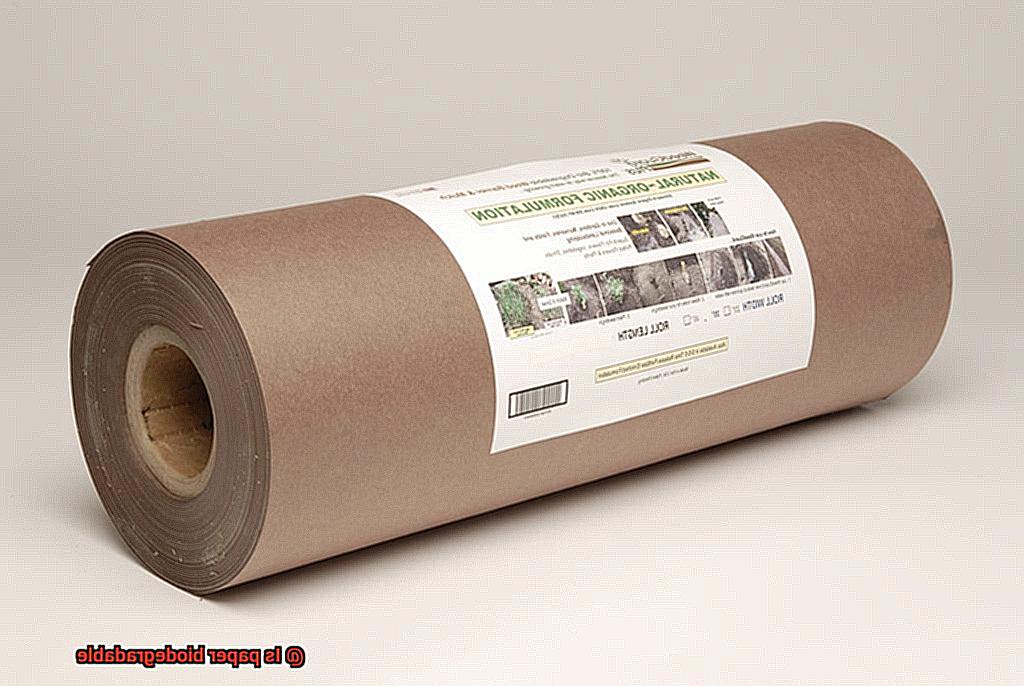Paper is a ubiquitous material that plays an essential role in our daily lives. From scribbling down notes to wrapping gifts, paper has countless uses. But have you ever wondered what happens to paper when it reaches the end of its life? Is it biodegradable, or does it pose a threat to the environment? Well, the answer might surprise you.
Despite being made from wood pulp, which is a renewable and natural resource, paper takes longer to decompose than some other organic materials. However, rest assured that paper is indeed biodegradable and breaks down over time. The length of decomposition time can vary from several weeks to months depending on disposal conditions.
Unlike plastics, paper doesn’t harm the environment and doesn’t pollute when disposed of properly. When paper decomposes, it releases carbon dioxide – a natural and harmless gas that’s vital for plant growth.
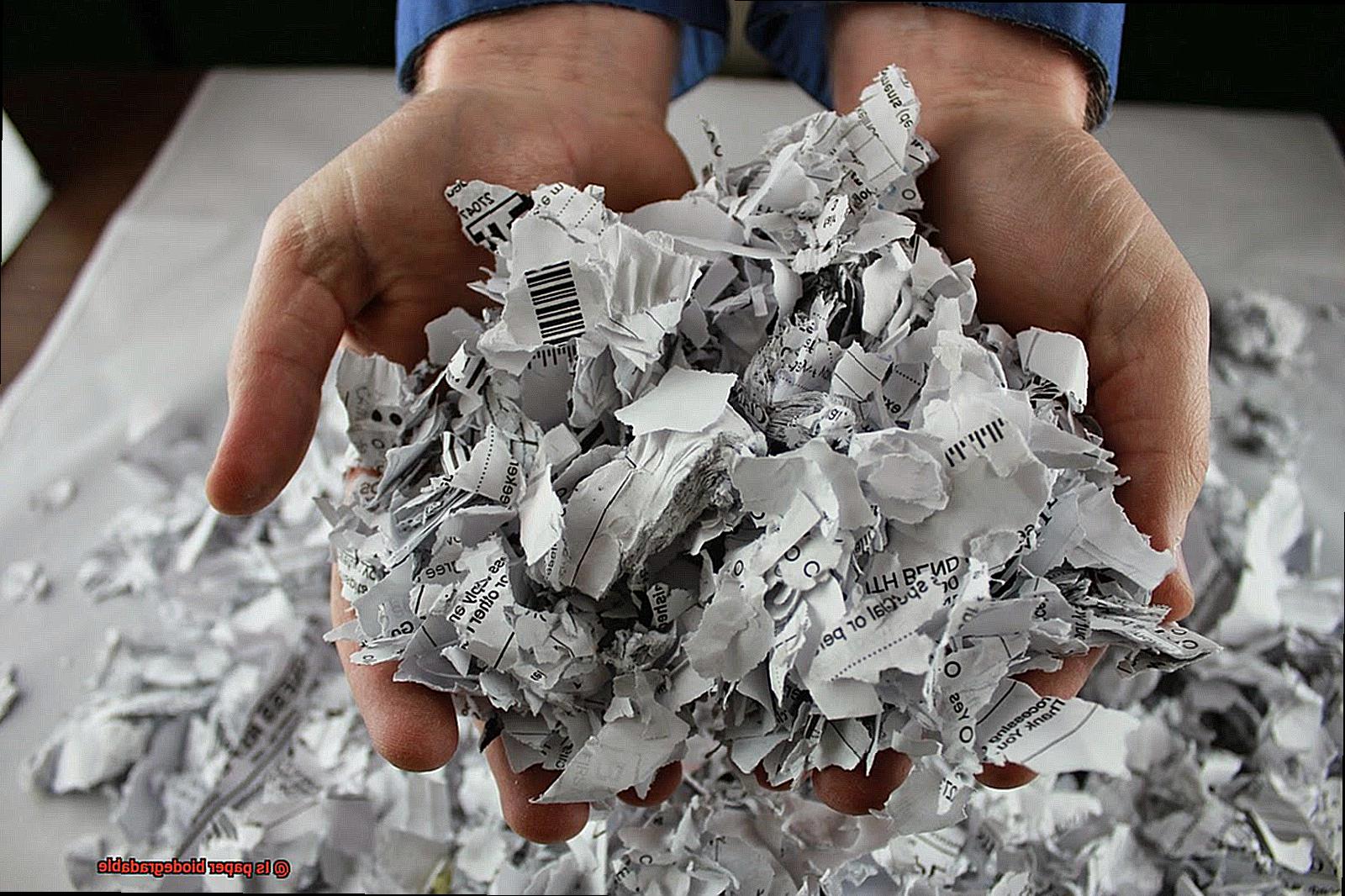
In this blog post, we’ll delve deeper into the question of whether paper is biodegradable or not. We’ll also explore various factors that influence its decomposition rate while discussing how proper disposal practices can minimize environmental impact. Additionally, we’ll share tips on reducing paper waste so that we can all do our part in protecting our planet.
Let’s get started.
What is Biodegradation?
Contents
Let me introduce you to biodegradation – a natural process that helps break down organic materials into simpler substances like water, carbon dioxide, and biomass.
The guests of honor at this party are microorganisms like bacteria and fungi. They feast on organic matter and break it down into harmless compounds, recycling nutrients back into the ecosystem. It’s like a buffet table with all sorts of yummy treats for the guests to enjoy.
Biodegradation is important because it keeps the environment healthy and functioning properly by reducing waste and pollution. Without it, garbage would just keep piling up, creating an unsightly mess.
Many materials can biodegrade, including food waste, yard waste, and even some types of plastics. However, not all materials are created equal in terms of biodegradability. Some take longer to break down or require specific conditions to biodegrade properly.
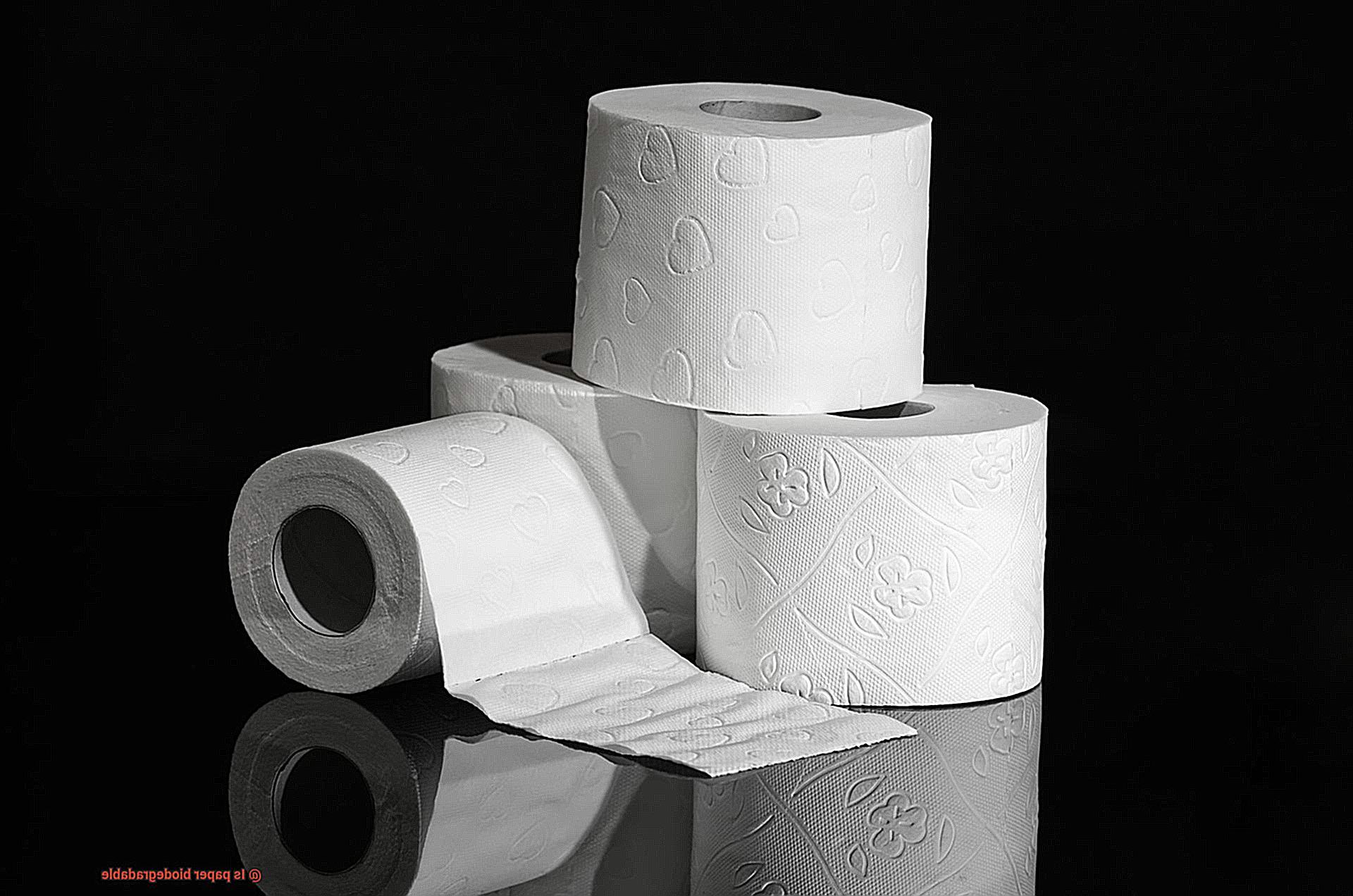
Let’s talk about paper – a material we use every day. Did you know that paper is made from wood pulp, which is a natural and organic material? This means that paper is generally considered biodegradable. When we discard paper and it ends up in a landfill or compost pile, it will eventually break down over time through the process of biodegradation.
However, the speed of this breakdown can vary depending on factors such as the type of paper, humidity, temperature, and oxygen levels. Glossy paper or paper coated with chemicals may take longer to biodegrade than uncoated or recycled paper.
But don’t worry – there’s something we can do to help reduce waste and conserve resources when it comes to paper. Recycling paper is an effective way to give it a new life. When paper is recycled, it is broken down into fibers and then reformed into new paper products. This reduces the amount of waste that ends up in landfills and conserves resources like trees and water.
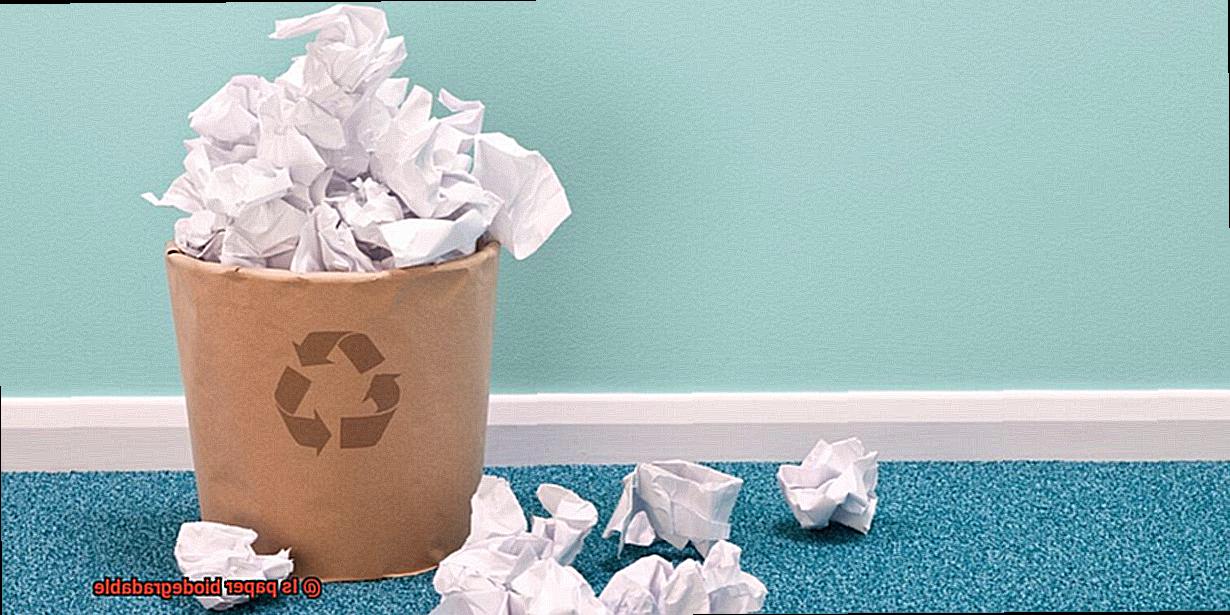
Is Paper Biodegradable?
Made from organic wood pulp, paper can be broken down by natural microorganisms in the environment. It’s like a feast for them, where they can digest the paper and turn it into harmless compounds that get recycled back into the ecosystem.
However, not all paper biodegrades at the same rate. The biodegradability of paper depends on various factors such as its type and disposal conditions. For instance, papers coated with plastic or wax take longer to biodegrade compared to uncoated papers. Similarly, paper disposed of in wet environments like landfills or compost heaps may take longer to biodegrade due to the lack of oxygen needed for microbial activity.
It’s essential to know that being biodegradable doesn’t necessarily mean being eco-friendly. The production of paper requires an enormous amount of natural resources like trees and water, and chemicals used in the process have negative impacts on our environment.

Therefore, it’s crucial to reduce paper usage and recycle whenever possible to minimize environmental impact. Every little bit helps.
Factors That Affect the Speed of Biodegradation
Picture paper as a mouth-watering feast for microorganisms, but some papers are more easily digestible than others. Factors such as type, additives, and disposal conditions all come into play when it comes to the speedy breakdown of paper.
To start with, the type of paper itself is crucial. Papers made from natural fibers, like cotton and hemp, tend to break down more quickly than those made from synthetic fibers such as plastic or polyester. So, if you’re looking to speed up the biodegradation process, opt for natural materials when shopping for paper products.
Another factor to consider is any additional materials in the paper, such as ink or coatings. These additives make it tougher for microorganisms to break down the paper, inevitably slowing down the biodegradation process. Moreover, chemicals such as bleach or chlorine used in the production of paper can also slow down biodegradation.
The environment in which the paper is disposed of is equally important. Papers buried in warm and moist soil will decompose faster than those left in dry or cold conditions. Sunlight exposure can also quicken biodegradation.
Finally, the size and thickness of the paper play an important role. Thicker papers require a longer time to break down than thinner ones and larger pieces more than smaller ones.
Advantages of Recycling Paper
Recycling paper has become a game-changer for our planet, helping to conserve natural resources, reduce greenhouse gas emissions, and create economic benefits. Let’s dive into the benefits of recycling paper further.
One of the most significant advantages of recycling paper is its ability to conserve natural resources. Trees are a vital resource for our planet as they provide oxygen and remove carbon dioxide from the atmosphere. By recycling paper, we can reduce the number of trees that are cut down to make new paper products.
Furthermore, recycling paper requires less water and energy than making new paper products from virgin pulp. This means that we are not only saving trees but also conserving water and energy resources.
Another benefit of recycling paper is its contribution to reducing greenhouse gas emissions. The production of virgin pulp and paper products is a significant source of greenhouse gas emissions.
By recycling paper, we can reduce these emissions and help mitigate climate change. Every ton of recycled paper saves approximately 17 trees and reduces greenhouse gas emissions by 60 pounds. This reduction in greenhouse gas emissions can go a long way in protecting our planet from further damage.
Recycling paper is also an excellent way to reduce landfill waste. Paper products make up a significant portion of landfill waste. By recycling paper, we can reduce the amount of waste that ends up in landfills and extend the lifespan of existing landfills. This means that we can reduce the amount of space needed for landfills and protect our environment from harmful chemicals leaching into the soil.
Last but not least, recycling paper has economic benefits. Recycling paper creates jobs in the recycling industry and generates revenue for businesses that collect and process recycled paper.
Additionally, using recycled paper in place of virgin pulp can be more cost-effective for businesses that use large quantities of paper products.
Disadvantages of Recycling Paper
One major drawback is the amount of energy and resources required to collect, sort, and process materials. Unfortunately, this can lead to increased greenhouse gas emissions and other negative environmental impacts. It’s like trying to save the world while contributing to environmental issues – a bit of a paradox.
Another disadvantage is that the quality of recycled paper may not always be as good as virgin paper. Recycled paper can be weaker, rougher, and less bright than virgin paper, which can limit its use in certain applications. Imagine trying to save someone but not being strong enough to carry them – that’s how recycled paper may feel when compared to virgin paper.
Contaminants can also be a big problem during the recycling process. Ink, glue, and other substances in the materials can reduce the quality of the recycled paper and make it less desirable for certain applications. In some cases, contaminated materials may even need to be sent to landfills or incinerated, which can have negative environmental impacts. It’s like trying to help someone who is sick but not being able to remove all the germs – it can be frustrating.
Finally, recycling paper may not always be economically feasible. The cost of collecting, transporting, and processing recycled paper can sometimes exceed the cost of producing virgin paper.
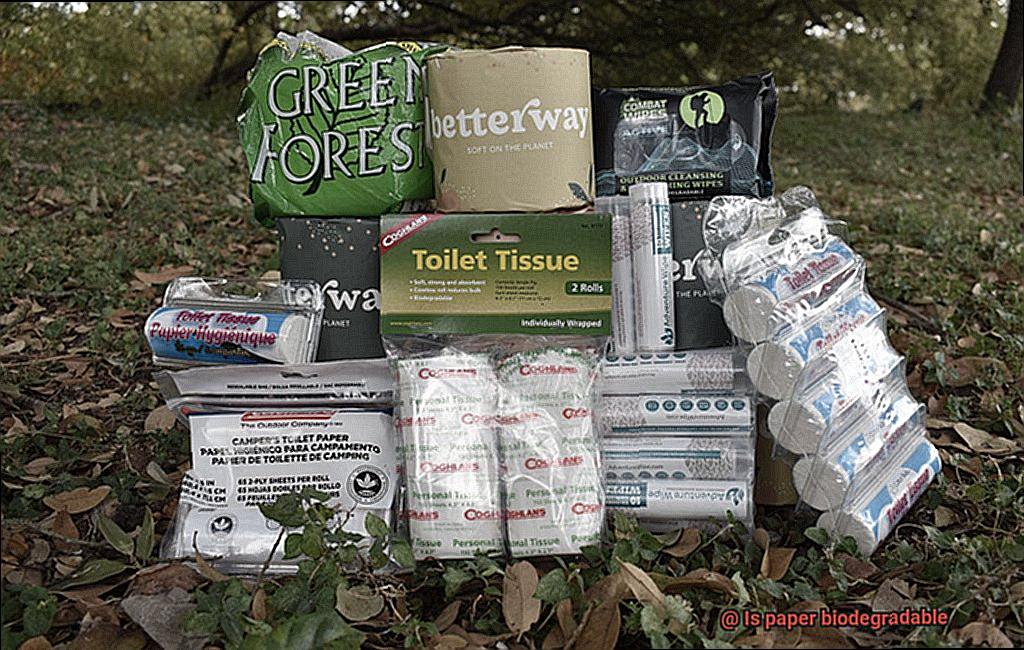
This makes it challenging for businesses and organizations to justify investing in recycling programs. It’s like wanting to help someone but not having enough money to do so – a tough situation indeed.
How to Properly Dispose of Paper to Reduce Environmental Impact
Then proper disposal is crucial. While paper is biodegradable, it takes a considerable amount of time to decompose, and during this process, it releases methane gas that contributes to global warming. Here are some ideas for properly disposing of paper and minimizing its impact on the environment.
Reduce Paper Usage
The first step in proper paper disposal is reducing usage. You can accomplish this by going digital, printing on both sides of the paper, and using paperless billing systems. This not only saves trees but also reduces energy consumption and waste that ends up in landfills.
Recycle Paper
Recycling paper is an effective way to conserve resources and reduce waste sent to landfills. Make sure you are following guidelines on what types of paper can be recycled and prepare it properly for recycling. Recycling paper saves trees, reduces energy consumption, and decreases waste sent to landfills. By recycling just one ton of paper, you can save 17 trees.
Compost Paper
Composting paper is another way to dispose of it. Certain types of paper such as paper towels and shredded newspaper can be added to a compost pile or bin. Composting paper produces nutrient-rich soil that can be used for gardening or farming. However, it’s important to note that not all types of paper can be composted as some may contain chemicals that can harm plants or animals.
Responsible Trash Disposal
When disposing of paper in the trash, choose products made from recycled or sustainable materials whenever possible to minimize waste.
If sensitive documents or materials cannot be recycled or composted, they should be shredded and disposed of securely. Burning paper should be avoided since it releases harmful chemicals into the air.
YeVLBkypPRU” >
Conclusion
To sum up, paper is biodegradable and can decompose over time. However, the rate of decomposition depends on several factors like paper type, humidity, temperature, and oxygen levels. When disposed of correctly, paper does not harm the environment. Nevertheless, its production requires vast amounts of natural resources such as trees and water. Additionally, chemicals used in the process negatively impact our surroundings.
The recycling of paper has revolutionized our planet by conserving natural resources, reducing greenhouse gas emissions, and creating economic benefits. Recycling paper saves trees, reduces energy consumption, decreases waste sent to landfills while also generating jobs in the recycling industry.
To reduce its environmental impact significantly, proper disposal of paper is crucial. By minimizing usage through digital means or using paperless billing systems, recycling paper, composting specific types of papers and responsible trash disposal we can all contribute to protecting our planet.
